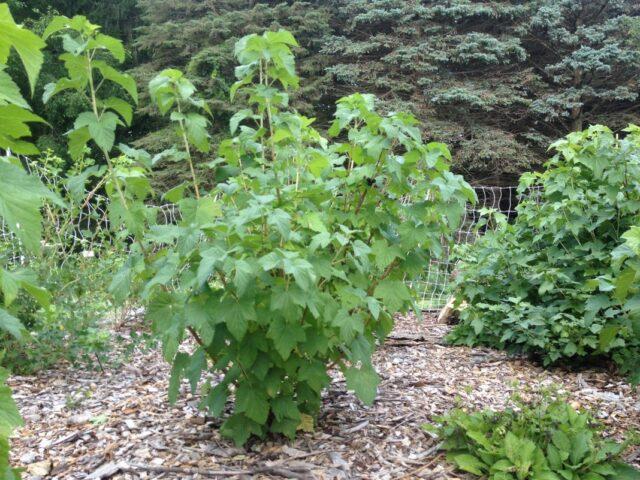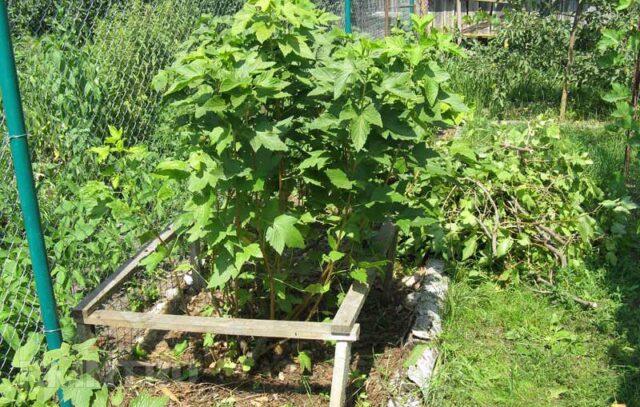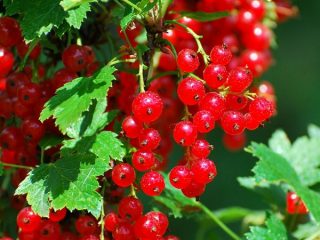Content
Currant Nyanya is a black-fruited crop variety that is still little known to gardeners. According to the declared characteristics, the species is distinguished by its large fruit size and increased resistance to kidney mites. Currant Nanny easily tolerates frosts and temperature changes throughout the season, maintaining a stable yield. But, in order to get maximum efficiency when growing it, it is necessary to study the features of planting and further care.
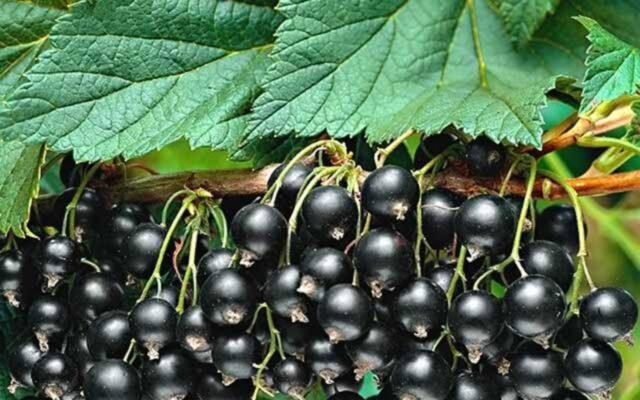
Variety Nyanya - a new promising type of culture
Breeding history
Currant Nanny belongs to the category of new products. Belgorod breeder V.N.Sorokopudov worked on its creation. The aim of the breeding was to obtain a variety that could combine large fruit size, excellent taste and increased resistance to unfavorable external factors. And the creator managed to achieve this. However, the Nanny is still undergoing tests, which should confirm all of her declared characteristics. Therefore, at present, this currant is not yet included in the State Register.
Description of the currant variety Nanny
This type of culture forms large bushes with a height of 1.5 m and a spread of growth within 1.2 m. Young shoots are erect, 0.7-1 cm thick, olive-colored, slightly pubescent. As they grow older, they thicken, acquire a brown-gray tint, lignify. In the process of growth, the shoots remain erect.
Nanny's kidneys are spiky, medium-sized, deviated. They have a greenish-red tint. Leaves are five-lobed, standard size. Plates of a dark green hue, with a wrinkled shiny surface, with deeply depressed veins. The central segment is significantly elongated and has a sharp apex. It connects to the lateral blades at a right or acute angle. Each sheet has a small open groove at the base. Medium petioles with anthocyanin. They are attached to the shoots at an acute angle.
The flowers of the Nyanya currant are medium, the sepals are painted in a cream shade with a pink tint. The petals are bent, light. The brushes are elongated, attached to the branches at an angle of 45 °. Each of them forms 8-12 berries. The stalks are of medium thickness, dark green in color.
The berries of the Nyanya currant are large, the average weight of each is 2.5-3 g. When ripe, they become a uniform black color with shine. The fruits are round in shape. On each branch of the shrub, up to 60 fruit clusters are formed. Therefore, during the ripening of the berries, it seems that the shoots are completely covered with them.
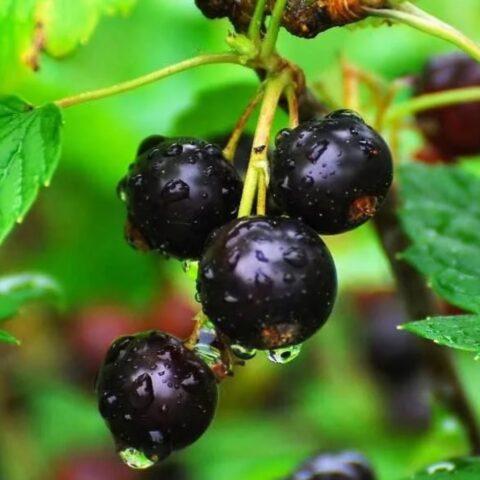
The aroma of the berries of the Nyanya variety is moderate
The skin is dense, thin, slightly palpable when eaten. The pulp is juicy, fleshy, contains an average amount of seeds. The taste of Nyanya currants is sweetish, with a slight sourness. The tasting assessment of the variety ranges from 4.4 to 4.9 points. The harvest is suitable for fresh consumption, as well as the preparation of various winter preparations.
Characteristics
Nanny is a modern variety that significantly surpasses many types of culture in its characteristics. And to be sure of this, you need to familiarize yourself with them in advance.
Drought tolerance, winter hardiness
This currant is able to withstand frosts down to -30 ° C without additional shelter.Only bushes up to three years old and transplanted in the current season need insulation for the winter. The nanny also does not suffer from spring return frosts, as her flowering period occurs when they are unlikely.
The shrub is able to withstand short-term drought while maintaining the quality of the fruit. With a prolonged lack of moisture, the yield decreases.
Pollination, flowering period and ripening times
This currant belongs to the self-fertile category. Therefore, it does not need additional pollinators. The ovary level is 70-75%. Nanny is a type of medium-ripening culture. The flowering period begins in the second half of May in the middle lane. Fruit ripening is simultaneous, starting from July 14th.
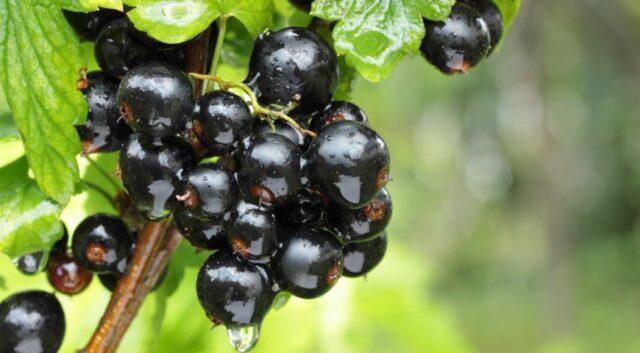
Currant Nanny is resistant to berry shedding
Productivity and fruiting
Nanny is a high-yielding, stable variety. From a bush, you can get 2.5-3.5 kg of marketable fruits. The Nanny shows maximum productivity 5-6 years after planting. To maintain efficiency, it is necessary to timely rejuvenate the bushes.
According to reviews, the photo and description of the Nyanya currant berry variety have a good presentation. They are collected dry. The harvest retains its qualities for five days in a cool room. Also, this variety easily tolerates transportation in the first days after harvest, provided that it is packed in boxes of no more than 5 kg each.
Disease and pest resistance
The nanny has a high natural immunity. If the growing conditions are correct, currants are not affected by powdery mildew and kidney mites. To maintain high resistance to diseases and pests, the bushes must be treated in early spring and late autumn with special preparations.
Advantages and disadvantages
Black currant Nyanya has many advantages that make it stand out from the rest of the varieties. However, it also has certain disadvantages that must be taken into account in order to achieve high productivity.
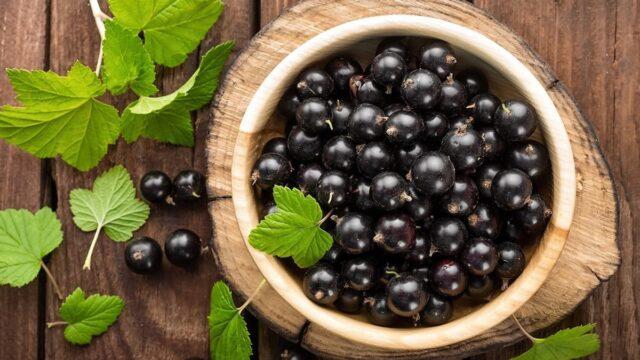
The bush begins to bear fruit from the second season.
The advantages of this variety:
- large fruit size;
- consistently high yield;
- great taste;
- marketability;
- dry separation of berries;
- shedding resistance;
- high frost resistance;
- not susceptible to kidney mites, powdery mildew;
- self-fertility;
- friendly ripening of berries;
- versatility of application.
Disadvantages of Babysitting:
- bushes need regular rejuvenation;
- does not tolerate prolonged stagnation of moisture;
- requires regular watering.
Features of planting and care
It is recommended to plant the shrub in the fall, namely in September. This will make it possible to get a well-rooted bush by the spring. For Nanny currants, it is necessary to choose a sunny area, protected from drafts. The maximum result can be achieved when growing the variety on loamy and sandy loam soil. In this case, the groundwater level at the site must be at least 0.8 m.
Throughout the growing season, it is necessary to control the level of soil moisture. In dry periods, the shrub should be watered 1-2 times a week with the soil getting wet up to 10 cm. Irrigation should be stopped when the berries ripen, as this can lead to their excessive wateriness.
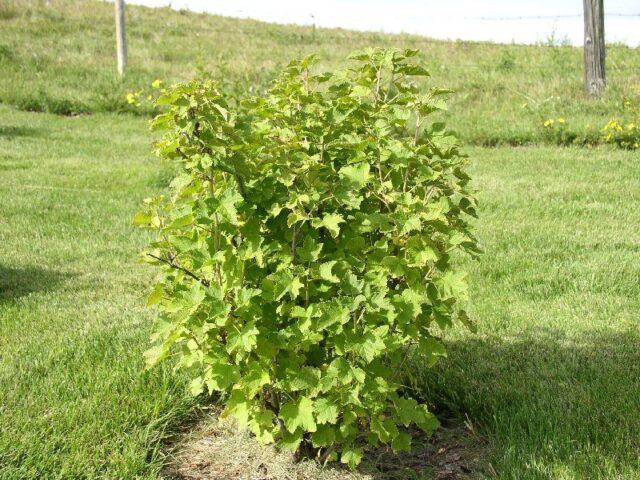
With a lack of light, the shoots of the plant stretch out, and the fruiting is poor
Caring for currants by Nanny implies timely removal of weeds in the root circle, as well as loosening the soil after each watering. These treatments will help preserve nutrients and allow air to reach the roots.
It is necessary to feed the Nanny currants twice a season.For the first time, it is recommended to use rotted organic matter in early spring during the beginning of the growing season. It can be spread out in the form of mulch under a bush or poured over with a solution. The second time feeding should be carried out during the formation of the ovary. During this period, it is necessary to apply phosphorus-potassium mineral mixtures.
Adult Nanny bushes do not need shelter for the winter. Only seedlings up to three years old need to be insulated, since they do not yet have a high level of frost resistance. To do this, lay 10 cm thick mulch from peat or humus in the root circle, and wrap the crown in two layers with agrofibre.
Conclusion
Currant Nanny is not yet widespread among gardeners. But, despite this, there are already positive reviews about the variety on the network, which confirm its high yield, unpretentious care and excellent fruit taste. Therefore, it can already be argued that Nanny is a really promising variety of currants with a minimum number of disadvantages.
Reviews with a photo about currant varieties Nyanya
